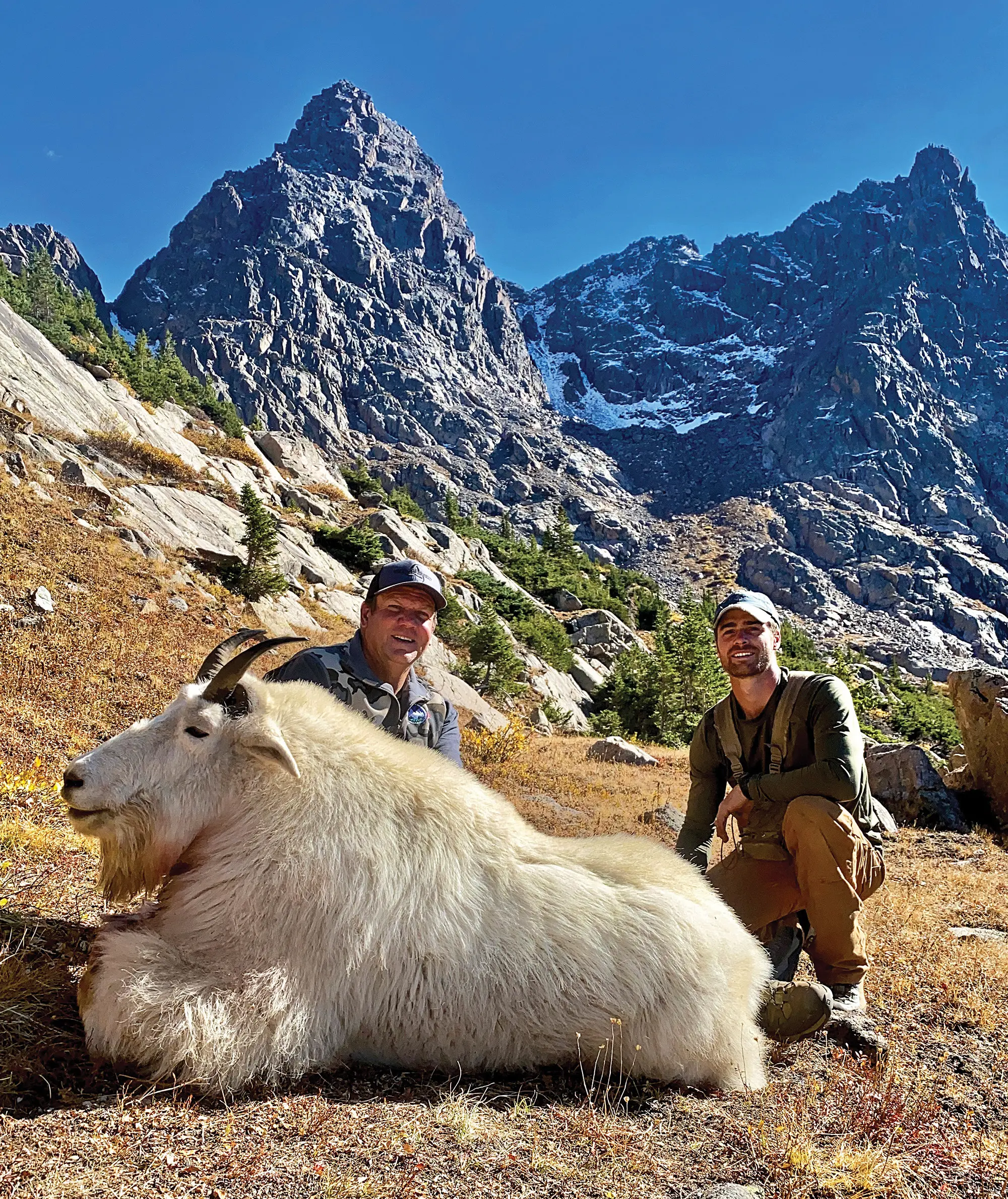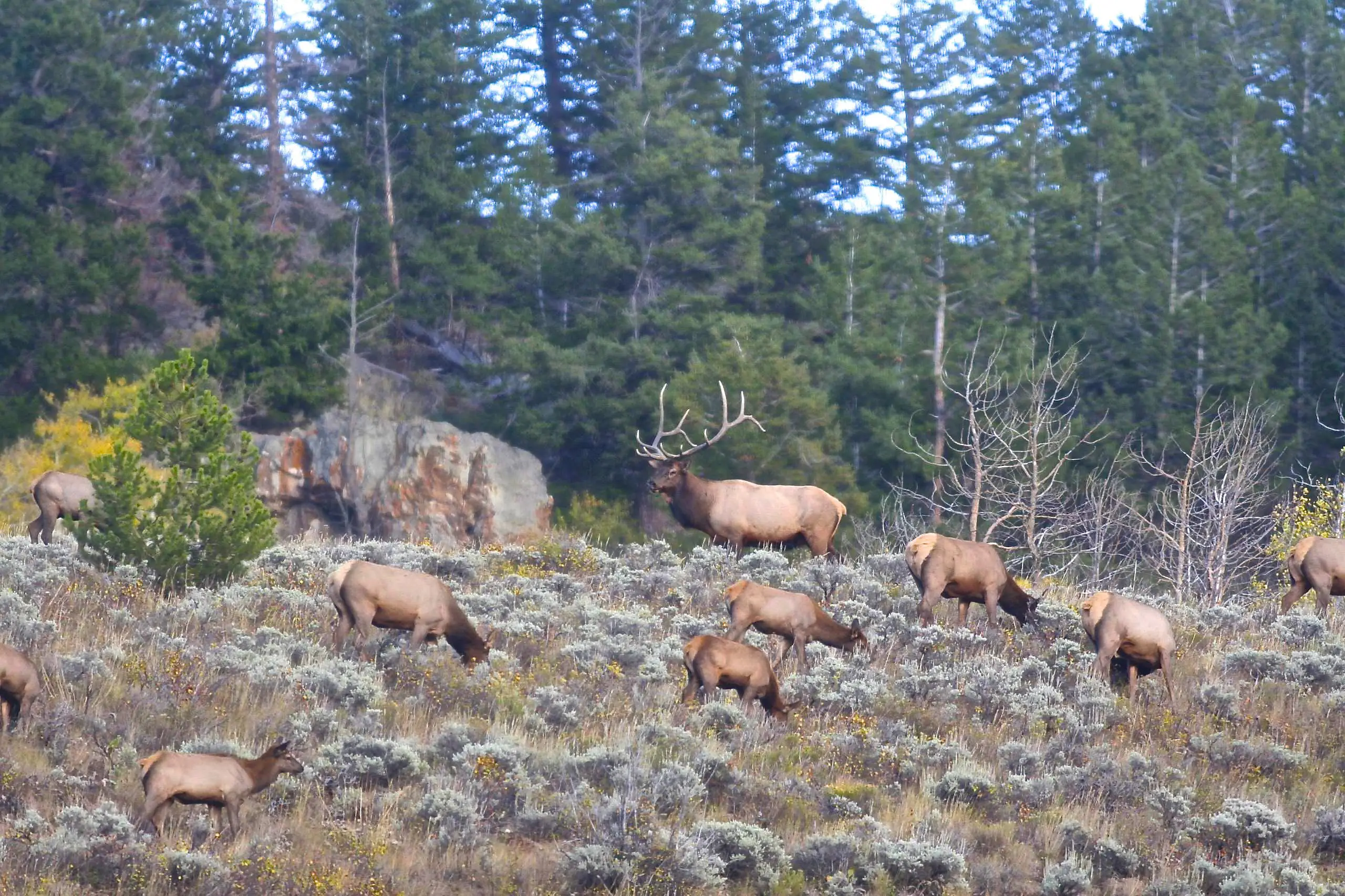
NOTICE: Certain links on this post may earn a commission for Western Hunter Magazine from Amazon or our other affiliate partners when you make a purchase. Thank you for your support.
Colorado Over-The-Counter Elk Hunting
Avoid the Application Apocalypse and go hunting!
Last summer, I wasn’t sure what I wanted to do for elk hunting in my home state of Colorado. I had applied for a limited entry unit as my first choice and then for a limited either-sex license in the 4th rifle season as my second choice. What I got instead was a refund and a bit of uncertainty on what my plans might be. I had drawn a buck tag, and with the season structure offering a later opening, I had prioritized that hunt. However, I do live in country with fantastic elk herds, even though many of them now magically find themselves on private land on opening week of archery season.
I’ve never been an archery hunter and wasn’t going to attempt an elk hunt with very little practice with my bow, so that realistically left me the 2nd and 3rd rifle seasons with unlimited tag opportunity in many Western Slope units as my fallback option. Procrastinators take heed: I ended up at True Value Hardware on the afternoon before the 3rd season opener buying my bull tag.
The kid behind the counter wished me luck and we talked about the warm, dry weather and lack of success by other elk hunters he knew, and the grim prospects to kill a bull with the conditions and previous seasons already taken place. Elk were expected to be holed up in unhuntable spruce jungles in the dark timber or on private land sanctuaries where almost no hunting was allowed.
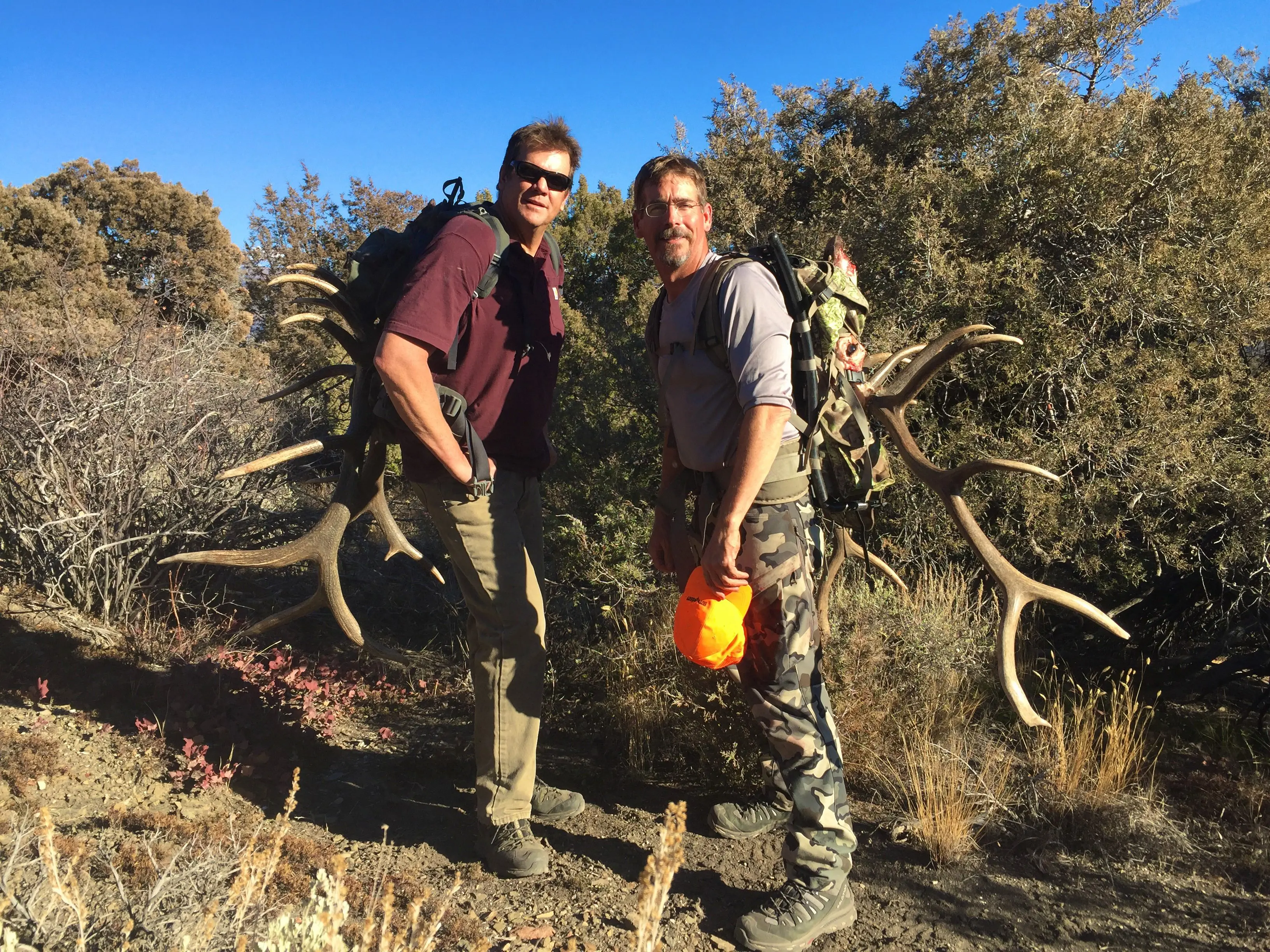
Mike and Mike posing with the last load out. The author and his hunting partner had to backpack the elk quarters to a place where horses could pack them the rest of the way out. The fun wears off when it's time to carry elk meat on your back, but the reward is worth the pain.
We’ll Take a Double
On opening day, I sat with my buddy, Mike Messier, overlooking a canyon that has been productive for deer in the past. A couple of small bucks and a few does were all we saw and the few rifle shots we heard were most likely little bucks hitting the dirt. Mike ended up taking a nice buck a few days later, but the weather was not conducive for the old mountain monarchs to show themselves and with high pressure and warm temps forecast for the remainder of the season, deer hunting was going to be tough.
I told Mike I wanted elk burger this winter and thought we should go try and fill our bull tags. We were hunting a spot I knew well that had produced in the past with sightings and a few bulls in the last decade. It was a bull sanctuary where they would have food, water, and cover all in an undisturbed 20-acre area. Elk don’t need a lot of country to live in before the snow blankets the ground, but what they desire more than anything is no human disturbance, and the older a bull gets the less tolerant he becomes.
At first light, we used the cover of a juniper to cross the ridgeline to avoid being skylined and then sat to glass. Right away, we picked up the yellow bodies of bulls a couple hundred yards off, feeding actively in the gray light. I could see that one bull looked exceptional for over-the-counter Colorado elk hunting and got set up on an appliance-sized boulder for the shot. The bull fed into a little fold in the terrain, hidden by pinion trees, and wasn’t visible for 20-plus minutes.
When he finally cleared the cover, Mike exclaimed that he had huge backs and 7 or 8 points on one side. The bull paused, I fired, and he tipped over out of sight with just his right antler sticking up. The bull appeared to be bedded by the angle of the antler, so we sat there and just watched. For 30 minutes the antler didn’t move at all. I told Mike I was going to beat feet to the truck to get packs and meat sacks.
I was gone for an hour and when I got back, Mike was hissing at me to get down. The other bulls that had bolted out of sight at my shot had returned looking for the big bull. Mike asked if he should shoot and I told him if he did, we’d have some serious work ahead of us. That was his green light and soon we had another dead bull just a few yards from where mine fell. Yes, we had doubled up on public land bulls in an OTC unit. I was excited, but I also knew we had to get to work; it was going to be a long day.
We got back to the truck after dark and planned on bringing back two hay burners in the morning with my wife Shellie as head wrangler. We spent the day shuttling sacks of boned out meat to a place where we could load the horses, as you could not get them to the spot where the bulls had fallen. The last trip was a heavy pack with big brown antlers strapped to my back. It was a highly satisfying drive home that evening with a sense of mission accomplished.
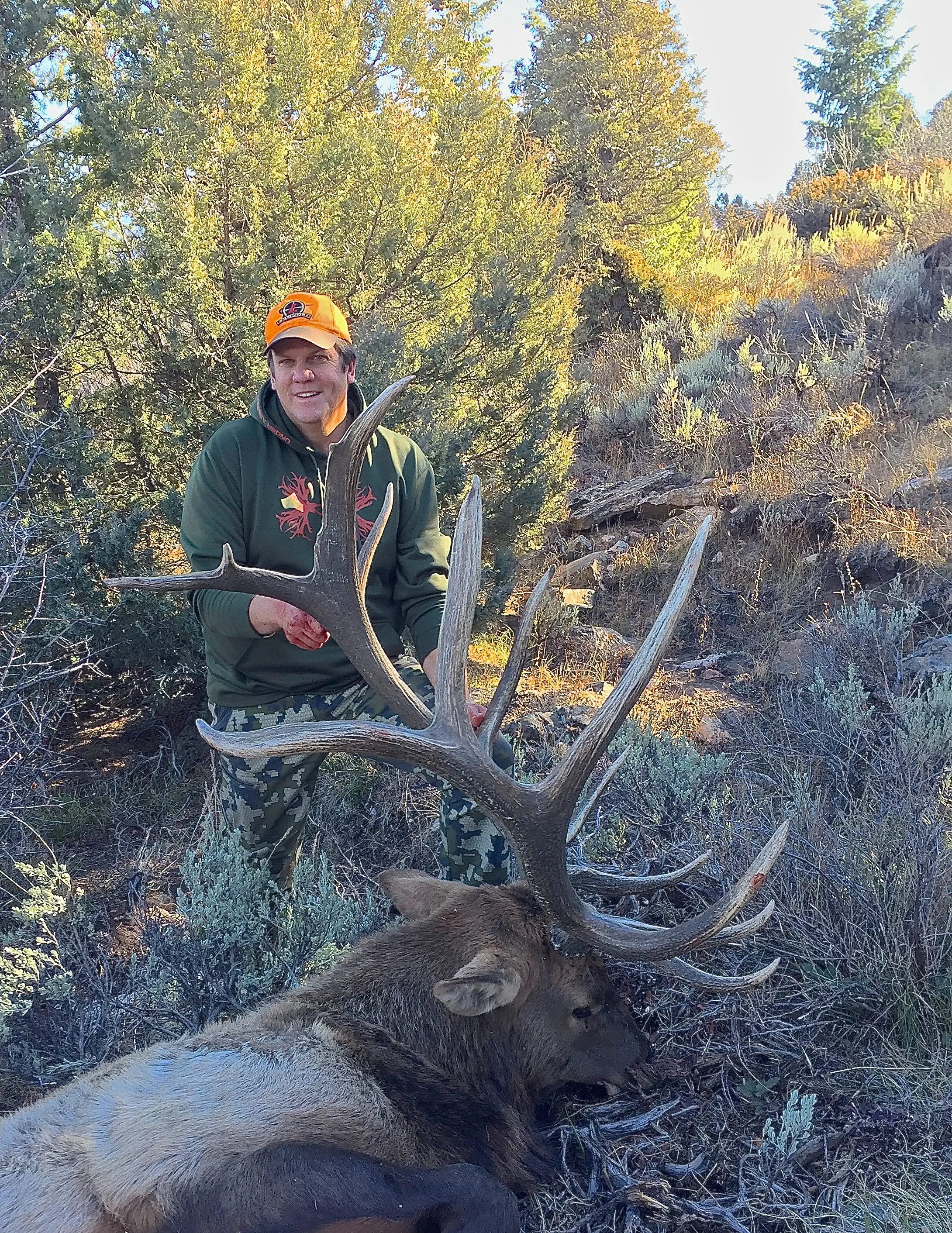
The author's 2016 bull was taken in an overlooked spot in an unlimited over-the-counter license unit. The bull had everything he needed in an area of just a few acres. While bulls like this are rare in these units, every year lucky and hardworking hunters come across them.
OTC Options
I realize that my elk hunting experience is way beyond what the average hunter experiences while elk hunting in Colorado and I wouldn’t want to suggest that you could duplicate it simply by reading this article. What I will say is there are different strategies and tactics that you can apply based on the terrain, season, and area of the state you hunt. Most importantly, Colorado is a place where you can buy a license for much of the elk country in the state and go hunting. “Go hunting” being the key term, because while the allure of a limited entry bull tag is great, you could spend a lifetime applying without getting that “special” tag.
For the purpose of discussion, tags for unlimited archery, 2nd rifle, and 3rd rifle seasons will be covered. These are the tags you can buy without having to apply or participate in the leftover tag process.
Archery:
While I don’t archery hunt elk in Colorado, I live here in the mountains and am hiking in elk country almost every day I’m off work in late summer and early fall. I spend a great deal of time in elk country simply observing and hiking the mountains they call home. What I’ve seen in the last decade is an incredible increase in popularity of the OTC archery elk season, which is confirmed in tag sales and hunter participation numbers. What I’ve also seen is a change in behavior and habits of elk where they are responding to the hunter numbers in a negative fashion.
Elk now avoid open alpine areas in much of the state in archery season where there is any tangible amount of hunting pressure. Where I live in Summit County, there are hundreds of elk that summer in the high alpine basins near the Eisenhower tunnel and they literally bail out of those basins come opening week of archery season and show up in big herds on private land in the valley bottom. Frustrated bowhunters walk the fence line bugling at herd bulls in vain, hoping to fool bulls into coming back onto public ground.
What it takes in this situation is an ability to push back into country well away from roads and day hunter access. Smaller herd bulls will occasionally steal cows from the big herds and there are always small straggler groups of cows on public land. Your best chance of success lies in your physical fitness and willingness to separate yourself from others in viable elk country. It might sound pretty basic, but anytime you have unlimited hunting pressure, elk avoid human impact and go to places where they aren’t pressured.
2nd Rifle Season:
This can possibly be the most difficult time to hunt elk in Colorado. Elk have been hunted for a month in archery season, nine days in muzzleloader season, and five days in the 1st rifle season that just ended a couple days prior to this season.
Also, Indian summer weather patterns seem to be more normal lately rather than the normal crisp fall and snow that we have seen historically. While I don’t have a body of scientific data to rely on for this article, I know in the last decade I have spent more and more time wearing nothing but a t-shirt during the middle of the day in hunting season.
The warmer and balmier the weather, the better access hunters have in the field and people can be everywhere. Most every bull has left the company of cows and is devoted to putting calories in their mouths, and getting some physical recovery from the rigors of the rut. This can be the one weakness to a bull’s routine.
Within a few days of the rut being over, bulls have made their way to their fall “bull nests”. Unless a bull is bumped by a hunter, they’ll stay in these sanctuaries for weeks. Some are even the same spots a bull might spend the winter. Bulls feed voraciously and sometimes become so distracted with feeding that they stay out well into the morning light.
Rarely will evening hunts be successful during this time of year, as bulls often bed until after dark. Finding an ambush location to spot a bull out feeding can be difficult and it usually involves homework and hiking in the dark. I know a few spots where I could take a bull every fall with this tactic and almost every one of them involves a two-hour hike in the dark to be in position.
Once bulls are bedded, you have a poor chance of sneaking up on one and would be better off leaving him alone to try again another morning. If the weather and situation are conducive, a night out in a spike camp close to but not within winding of the bulls is a great option.
3rd Rifle Season: During the 2nd and 3rd rifle seasons, there is quite often a snowstorm that can affect elk in these seasons. When snow falls and accumulates in a substantial manner above 10,000 feet, elk will be pushed lower. This weather and snow cover can eliminate almost half of the country elk live in and concentrate them at lower elevations.
Small bulls may still accompany large groups of cows, but a majority of the branch-antlered bulls will be in bachelor groups. Younger bulls much prefer the company of other bulls, but old bulls seem to be totally indifferent. As fall progresses into winter, bulls seem to segregate in age classes to a certain degree.
By this latter part of autumn, bulls have also been hunted, spooked, and bumped and can be very difficult to locate. They seek out solitude from humans and keep going until they aren’t bothered or shot at. A bull will seek out what he needs, and the older a bull gets, the better chance there is that he has found a spot where he isn’t going to be bothered. Young bulls follow older bulls, so young bulls learn these spots, too.
My friends, family, and I have taken four bulls in such a spot over a decade. It’s less than 20 acres and has food, water, cover, and solitude. We don’t hunt that spot every year, but I will see bulls in there more often than not.
We’ve joked that these “bull nests” are more conducive to bears and mountain lions than hooved animals. The terrain surrounding them can be steep, rough, thick, and nasty, and is overlooked by hunters mainly because they’re really tough to get into and it would be physically challenging to pack an elk out. Such spots might be very difficult for even the most seasoned mule to navigate into for packing. To locate these “bull nest” spots requires desire, physical effort, and some insight into what bulls need to survive. If it was easy, everyone would do it.
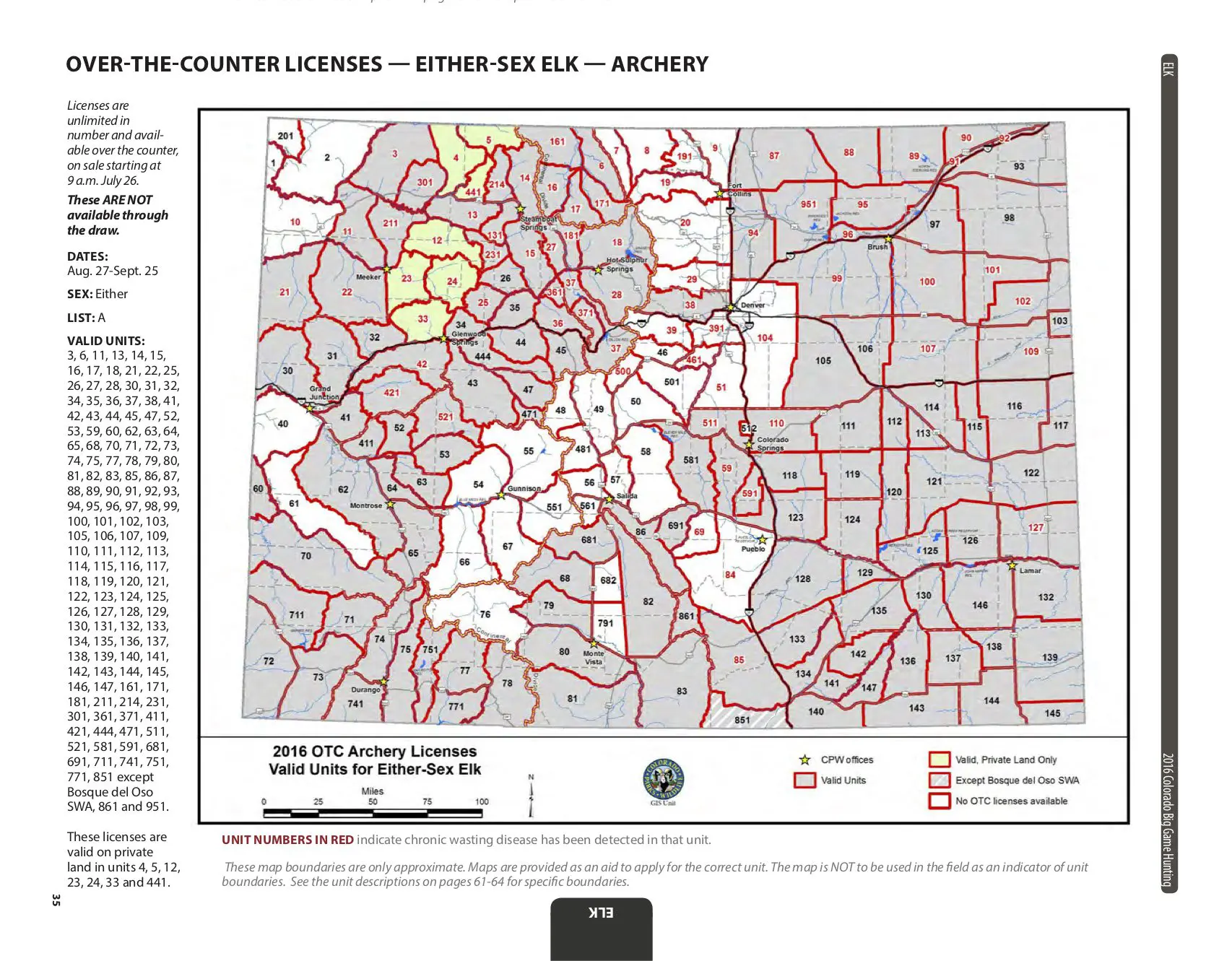
A Tale of Three Regions
Colorado is divided up into different geographical areas by wildlife managers, but the model I like to use is by combining that idea with that of the weather forecasters. Most OTC elk units fall into three basic areas.
Northwest Area/Northern Mountains. It’s not a hard and fast line, but I refer to this as that area north of Interstate 70 and west of the Continental Divide. This area of Colorado holds the largest elk herds and highest population of elk in the state. There is a tremendous amount of opportunity and public land, but there are also tens of thousands of hunters who descend on the region in search of elk.
One of the biggest challenges hunters face here is the amount of private land in the middle ground. Elk get bumped and have learned to seek safe haven and less pressure on private ground. I remember years ago traveling out of the national forest in the Bears Ears region northeast of Craig after an unsuccessful weekend of hunting. I saw hundreds of elk on private ranches that bordered to public lands. It’s a phenomenon that holds true every season and doesn’t show any sign of getting better.
Dealing with it from a hunting standpoint is another challenge entirely. The earlier you hunt, the better. Archery season is the best option for finding the most animals on public land from an unlimited tag standpoint.
However, there is a trend in archery hunting and the popularity of it is skyrocketing. There is a substantially higher number of archery hunters participating every year. Talking with a wildlife manager recently, he acknowledged that this is true. It had been addressed in conversation only at this point, but the consensus with Colorado Parks and Wildlife is that they cannot afford the revenue loss there would be from limiting bowhunter numbers.
Later in the fall, rifle hunters are facing the obvious challenge of finding pressured elk from the archery, muzzleloader, and first rifle season. While huge numbers of cows group up on private land, bulls have fewer tendencies to do so. Cows are very comfortable in the safety of large numbers in a hay pasture on a ranch, but it would be a rare occurrence to find a group of bulls older than raghorns there.
Mature bulls gravitate toward cover and solitude after the rut passes and searching for the “bull nests” is your best chance of success. Bulls might rut cows on private land because that’s where they are finding their girlfriends, but when the rut is over, they have no problem going back to the national forest and beating you in a game of hide and seek for a month or two.
The Central Mountains. I consider this to be the second area of separation for elk when describing regions. Basically, the area covers terrain from the Continental Divide west to the Utah state line and from I-70 to the Gunnison River/Basin. While elk populations aren’t as high as the NW Mountains, it still holds good numbers, and the mountain ranges are sharper on average than the NW.
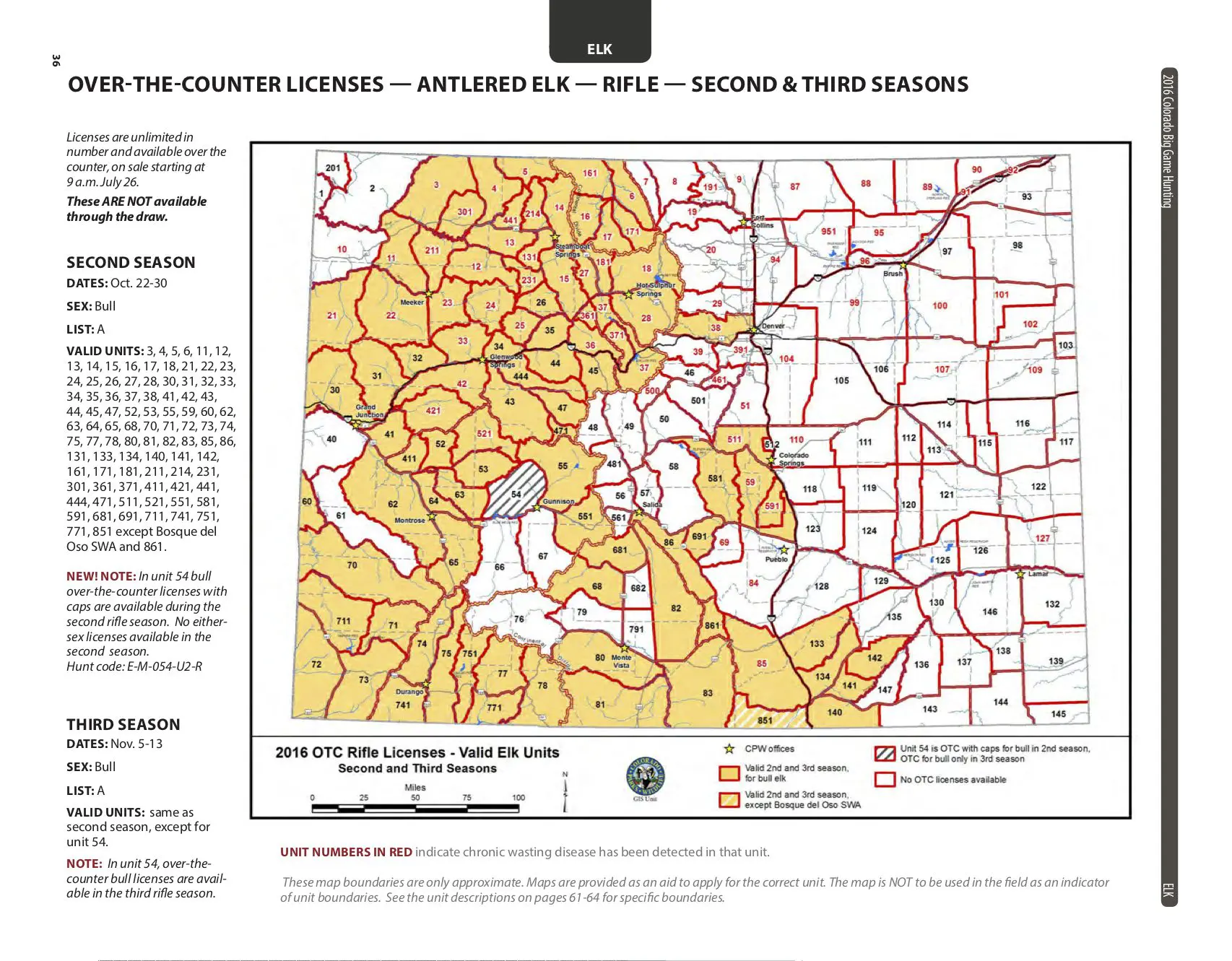
A dominant dynamic particular to these mountains is a huge presence of summer recreational users. Backpackers, fishermen, hikers, campers, ATV-ers, and people doing just about anything you can imagine are all over these beautiful mountains all summer long. It’s not just late summer archery hunters that are encroaching on elk habitat; it’s Joe and Joanna Recreator. People bump elk and instead of elk lounging all summer in idyllic alpine basins, many elk are found below treeline in aspen and spruce forests that stretch for miles and miles.
This can be very difficult hunting and there isn’t an easy approach. You just have to lace up your boots, pack a good lunch, and dive into the sea of aspen and timber.
Pressure comes from trailheads and easy-access camp spots and roads. Elk get pushed off and away from these spots and seek solitude and groceries. They can find these things down in the oakbrush and have everything they need in the oakbrush-aspen transition zone.
Glassing likely canyons from a distance (read Remi Warren’s article in this issue) and simply finding elk is helpful to your elk hunting success. The angle you might spot elk from could be far enough that you’re only seeing tiny tan spots on a ridge from a few miles away.
The Southwest region. This can be the most challenging place to kill elk. The San Juan Mountains dominate this area, and it is one of the largest tracts of roadless real estate in the Lower 48. The terrain goes from mountains over 14,000’ down to flat pinion/juniper winter range and elk can be found from about 12,000’ down to the winter range depending on time of year and hunting pressure.
A significant challenge to hunting these elk is the distance some of these elk cover in the fall when moving from summer alpine and subalpine habitat to the winter range. These mountains typically see massive amounts of snowfall, and winter comes early here. There is often a storm in late September or early October that pushes elk out of the high country into the middle zone of aspen, spruce, and ponderosa.
While the San Juans are composed of giant, imposing peaks, below the peaks are heavily timbered ridgelines and drainages that stretch for miles. Successful outfitters pack clients into remote camps and are successful through accumulated knowledge of elk movements and presence in different areas and different times of year. Knowledge of elk habits in these areas is paramount to success and favors the hunter invested in returning year after year to learn areas.
Opportunity Is There; Go Find It!
Many people have fallen into the trap of what I refer to as the “Application Apocalypse.” Applying and building points, suckered into a continual license purchase pattern and chasing dream tags is what this is all about.
Doing the math on limited quality elk tags and the sheer number of the people applying for them doesn’t bode well for anyone wanting to hunt elk on a semi-regular basis, unless you’re a resident of that state or choose to hunt with the orange army in an OTC tag area.
I’ve been successful enough that I have scratched the itch and feel like I can say that it’s the hunting experience that is just as valuable as the success of the hunt. One without the other rings hollow. Showing up at a private ranch and shooting an elk standing in an unhunted cattle pasture might even be less satisfying than remembering campfire tales with friends and family and the myriad of intangibles we take home from the elk hunting experience.
Colorado OTC elk tags give you a chance at an elk and also allow you to partake in the pursuit on whatever level you choose. Success isn’t easy, but the rewards go to those who put in the time and effort.


